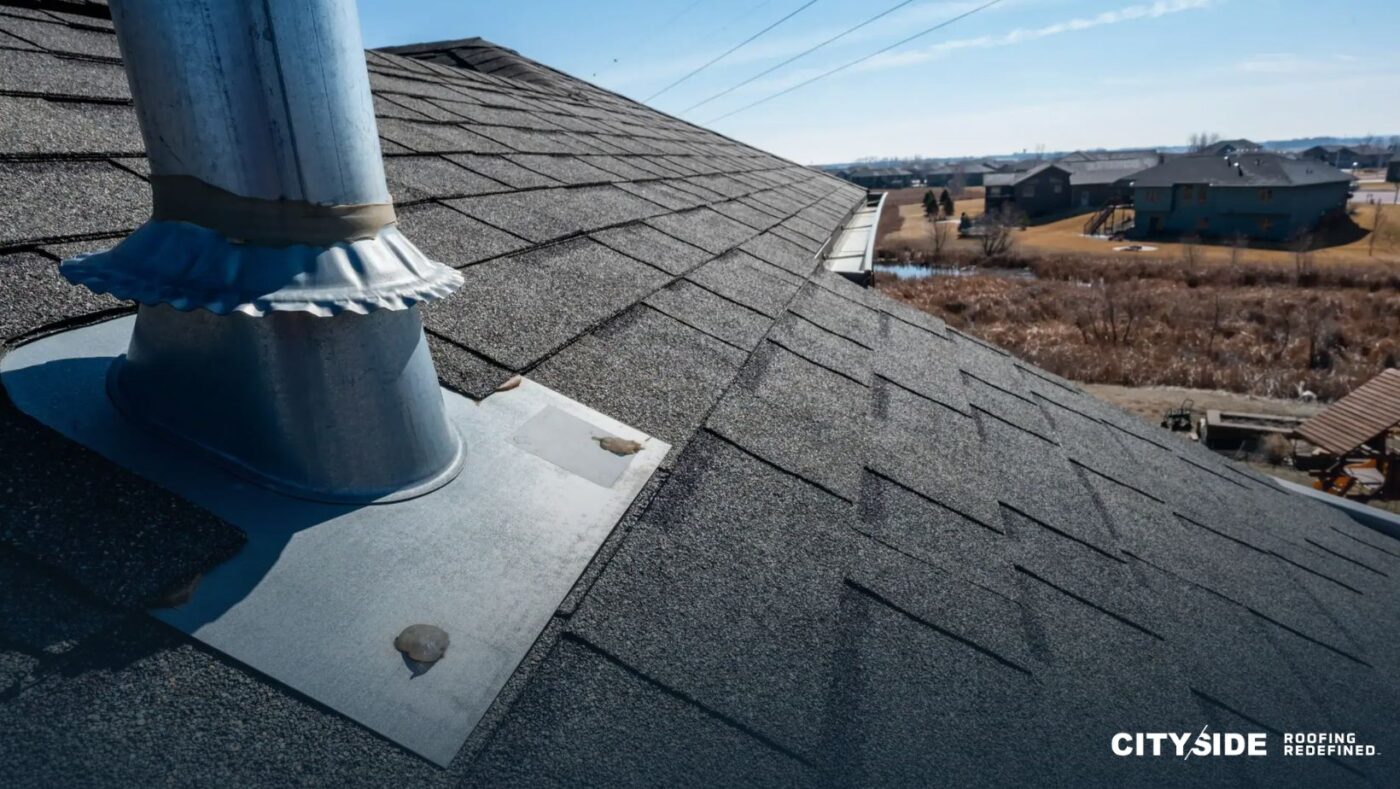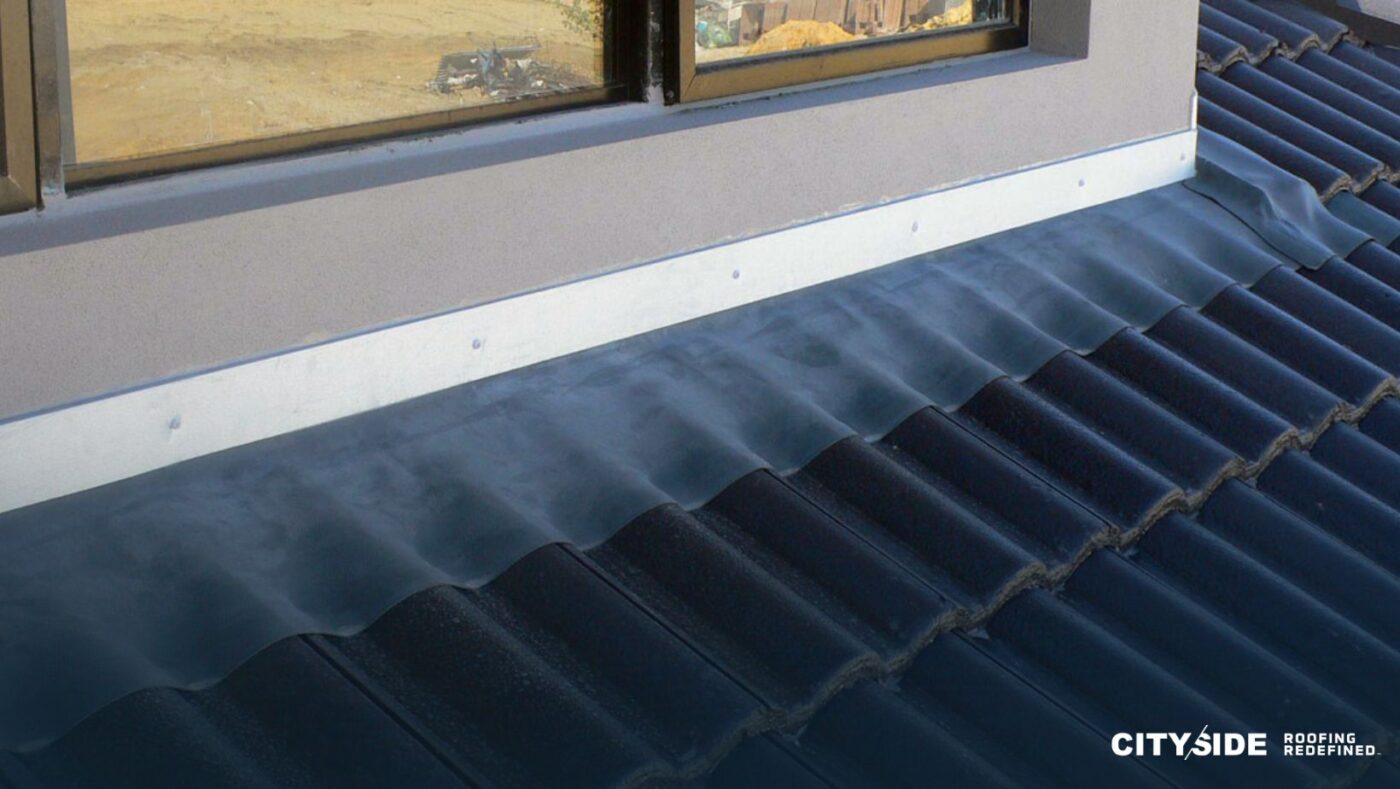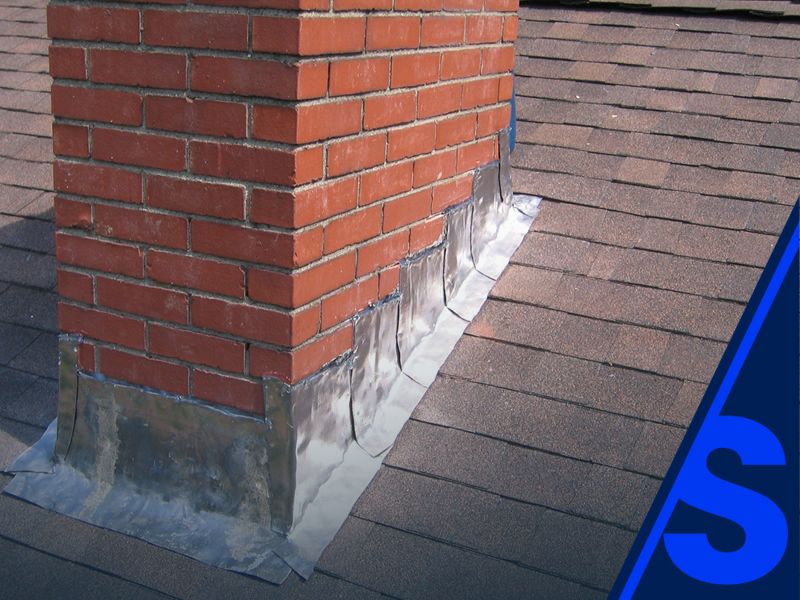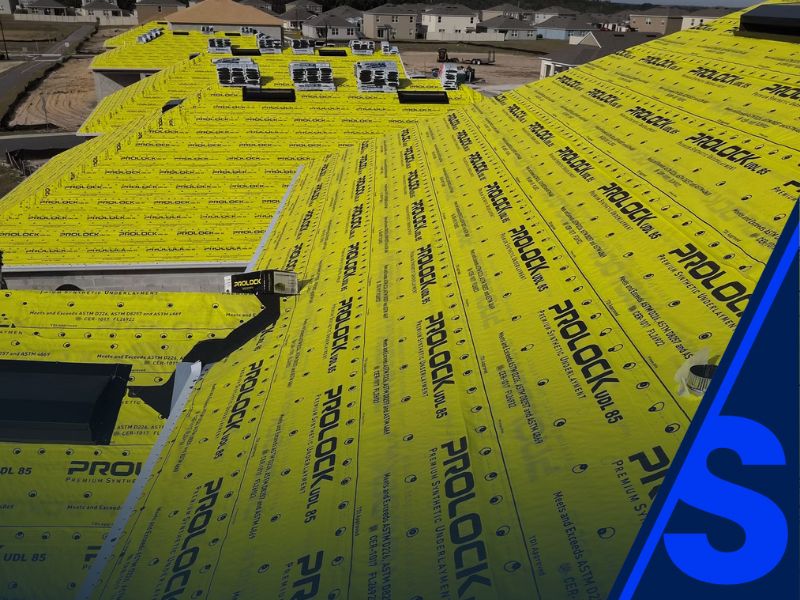Table of Contents
Roof flashing is one of those small details in construction that carries big consequences if overlooked. It protects vulnerable roof areas, ensures water moves off the structure instead of seeping into the roof deck, and reduces the chance of callbacks from leaks. For builders, learning how to handle flashing at valleys, dormers, skylights, and chimneys is critical to protecting your roof and maintaining production schedules.
This guide explains what roof flashing really does, the different types of roof flashing, how flashing directs water away from the roof, and why proper detailing around transitions matters. By the end, you will know about roof flashing in detail and understand why flashing is essential in every new roof installation.
What is Roof Flashing and Why is it Necessary

If you are asking what is roof flashing, the answer is simple. Roof flashing is a thin material, often sheet metal, installed at joints and penetrations on a roof system to redirect water away from vulnerable roof areas. Without it, the risk of water seeping into the roof deck and interior walls increases dramatically.
Flashing is used wherever parts of the roof intersect or meet vertical surfaces like walls or chimneys. The purpose of flashing is to act as a barrier and water diversion system. Flashing directs water away from the roof and toward safe discharge points like the gutter system. For builders, flashing isn’t optional, flashing is necessary to meet code, protect warranties, and prevent roof leaks that cause expensive callbacks.
Common Types of Roof Flashing Builders Should Know
Different types of flashing are used depending on the roof features. Some of the most common types of roof flashing include:
- Step flashing: used where a roof plane meets a vertical wall such as at dormers. Each piece of step flashing overlaps shingles to channel water down the slope.
- Valley flashing: installed at roof valleys where two slopes meet. It prevents water from pooling in these channels and flowing into the roof deck.
- Apron flashing: also called apron flashing, used at the base of chimneys or dormers where the vertical surface meets the roof.
- Counter flashing: paired with base flashing around chimneys to create a watertight seal.
- Drip edge flashing: installed along the edge of the roof to keep water away from fascia and direct it into gutters.
- Skylight flashing: designed to protect skylight perimeters where roof penetrations are highly vulnerable to leaks.
Each flashing type solves a different problem. Builders who know about roof flashing materials and their applications can reduce installation errors and ensure long-term performance.
What Flashing Materials Are Used for Roof Systems
The choice for flashing depends on durability, climate, and roof design. Common roof flashing material options include aluminum flashing, copper flashing, galvanized steel, and other metal flashing systems.
- Aluminum flashing is lightweight, corrosion resistant, and easy to shape.
- Copper flashing is a premium choice for flashing that offers longevity and aesthetics, though at a higher cost.
- Galvanized sheet metal is widely used for flashing in residential construction because it is cost-effective and durable.
Roof flashing is a thin metal component, but the material for flashing impacts its lifespan and performance. Builders need to match flashing material to the roof system and local code requirements.
Roof Flashing Sizes and Why They Matter

Roof flashing sizes vary depending on the flashing type and roof pitch. A piece of flashing must be large enough to extend under the roof shingles and over the adjoining surface to guide water away from the roof.
For example, a piece of step flashing is typically sized to match the course of shingles. Valley flashing may be wider, especially in open roof valleys where heavy water flow is expected. Counter flashing sizes differ depending on chimney dimensions.
Builders must know about roof flashing sizes and follow manufacturer or building code specifications to ensure the flashing will be installed correctly.
How to Install Roof Flashing Around Complex Roof Features
Flashing is usually installed during roof installation, but how it is applied depends on the detail.
- At chimneys, chimney flashing combines base flashing and counter flashing to keep water from entering between the chimney and roof.
- At dormers, step flashing is placed piece by piece alongside shingles. Each piece of step flashing ends under the next shingle course for full coverage.
- At skylights, skylight flashing kits integrate apron flashing, step flashing, and counter flashing to surround the roof penetration.
Install roof flashing carefully around these details to prevent roof leaks. A roofing professional or roofing contractor should be involved to ensure flashing needs are met and code compliance is achieved.
Why Roof Flashing is Important for Builders
Flashing is essential in every roof system because it protects vulnerable roof areas such as valleys, penetrations, and roof edges. Flashing is important not only for preventing water damage but also for meeting inspection standards and warranty requirements.
Flashing into the roof is typically hidden beneath roof shingles or roof materials, but its absence quickly shows when leaks appear. The importance of roof flashing for builders lies in avoiding callbacks, delays, and reputation risks. A poorly flashed roof replacement roof or new construction project can quickly lead to roof flashing problems that undermine the entire roof installation.
Roof Flashing Problems Builders Should Watch For
Even when flashing is installed, mistakes can create roof flashing problems. Common issues include:
- Improper overlap or gaps in step flashing around dormers.
- Counter flashing not embedded properly in mortar joints around a chimney and roof.
- Drip edge flashing missing at the edge of the roof, leading to fascia damage.
- Using the wrong flashing material for flashing, such as non-corrosion resistant sheet metal in coastal environments.
These issues make roof areas vulnerable to roof leaks. Builders need to include roof inspection protocols in quality control checklists to verify flashing is installed properly.
Different Types of Roof Systems and Flashing Applications
The need to know about roof flashing becomes clearer when comparing different types of roof designs.
- Shingle roof systems require step flashing, drip edge flashing, and valley flashing as standard.
- Metal roofing often uses continuous metal flashing integrated with panels at valleys and penetrations.
- Low slope roof systems may use membrane-compatible base flashing and counter flashing details.
Flashing is used for roof protection across all roof types. The specific flashing type depends on parts of the roof, the roof pitch, and the roof features present.
Preventing Roof Leaks Through Proper Flashing
Flashing directs water away from the roof and into safe drainage paths like gutters. Without it, flashing isn’t doing its job, and water can start seeping into the roof deck.
For builders, the goal is to prevent roof leaks before they happen. This means ensuring flashing is installed according to manufacturer instructions, code, and inspection standards. Roof maintenance schedules should include checking vulnerable roof areas for flashing wear.
A roofing contractor like CitySide Roofing can partner with builders to ensure roof flashing directs water as intended and reduces the risk of callbacks.
Repair Roof Flashing or Replace It

Sometimes a roof inspection reveals damaged or corroded flashing. Builders must decide whether to repair roof flashing or replace it entirely.
If a piece of flashing is only slightly lifted, it can often be reset with fasteners and sealant. But if flashing is deteriorated, bent, or pulling away from the roof plane, replacement is the better option.
Flashing will be installed properly during a roof replacement, but in new construction the key is avoiding future roof repairs by getting flashing details correct the first time. Partnering with a roofing contractor in Florida ensures flashing and counter flashing meet code and project specifications.
What Builders Need to Know About Roof Flashing
To learn what roof flashing is truly about, builders should view it not just as a component, but as part of the entire roof system. Flashing isn’t just a piece of metal—it is the system that keeps water away from the roof and toward drainage systems.
Everything you need to know about roof flashing comes down to three points. First, flashing is used for roof transitions and penetrations where leaks are most likely. Second, flashing is typically metal, with aluminum flashing and copper flashing being common roof flashing materials. Third, flashing is essential for protecting your roof from long-term damage.
By keeping flashing details top of mind, builders can deliver new roof systems that meet code, reduce callbacks, and protect client investments.
Conclusion and Builder Takeaways
Flashing is essential for every roof installation. For builders, flashing is not just another task, it is the detail that ensures your projects pass inspections and avoid costly leaks later.
Key points to remember:
- Roof flashing is a thin material that redirects water away from vulnerable roof areas.
- Common types of roof flashing include step flashing, valley flashing, apron flashing, counter flashing, drip edge flashing, and skylight flashing.
- The choice for flashing material affects durability. Aluminum flashing, copper flashing, and galvanized sheet metal are all common roof flashing materials.
- Flashing is installed at valleys, chimneys, skylights, and the edge of the roof. Each flashing type has specific installation requirements.
- Roof flashing problems often arise from poor installation or material mismatch. Builders should use roof inspection protocols to catch issues early.
- Proper flashing directs water away from the roof and prevents roof leaks, ensuring quality control and reduced callbacks.
If you are a builder seeking roofing solutions that meet code, streamline production, and reduce long-term risk, partner with CitySide Roofing today for expert flashing installation and project support.



